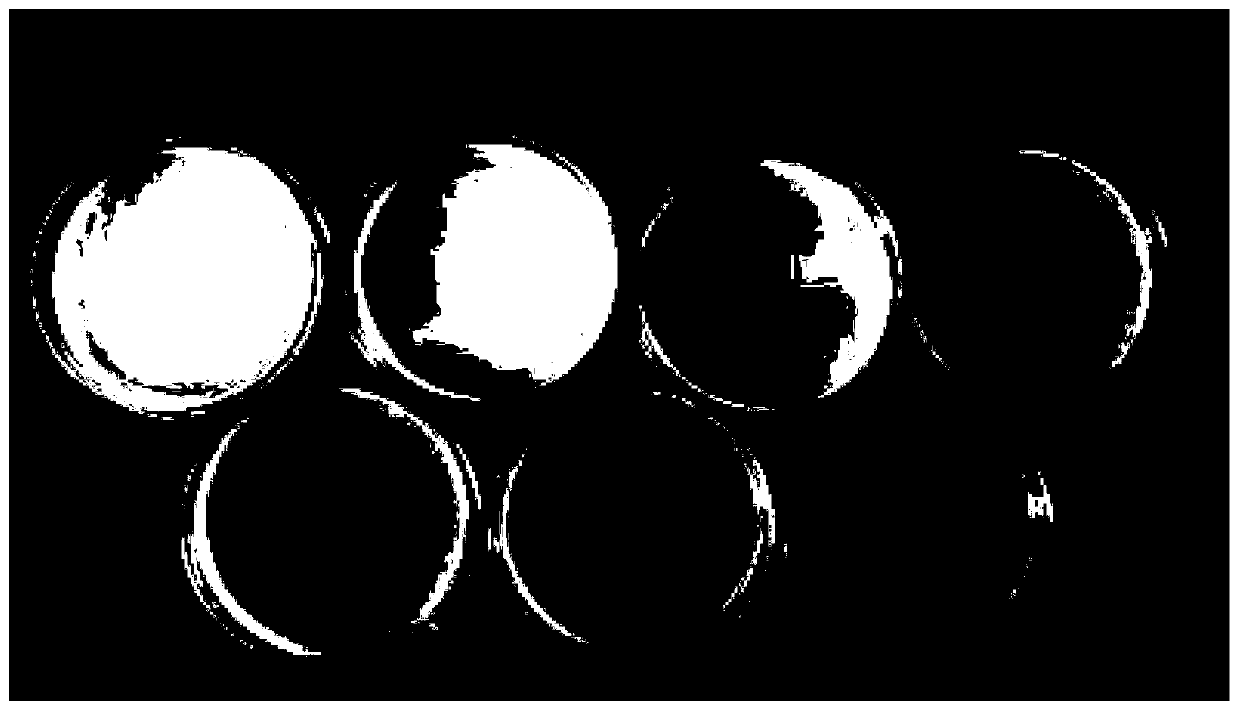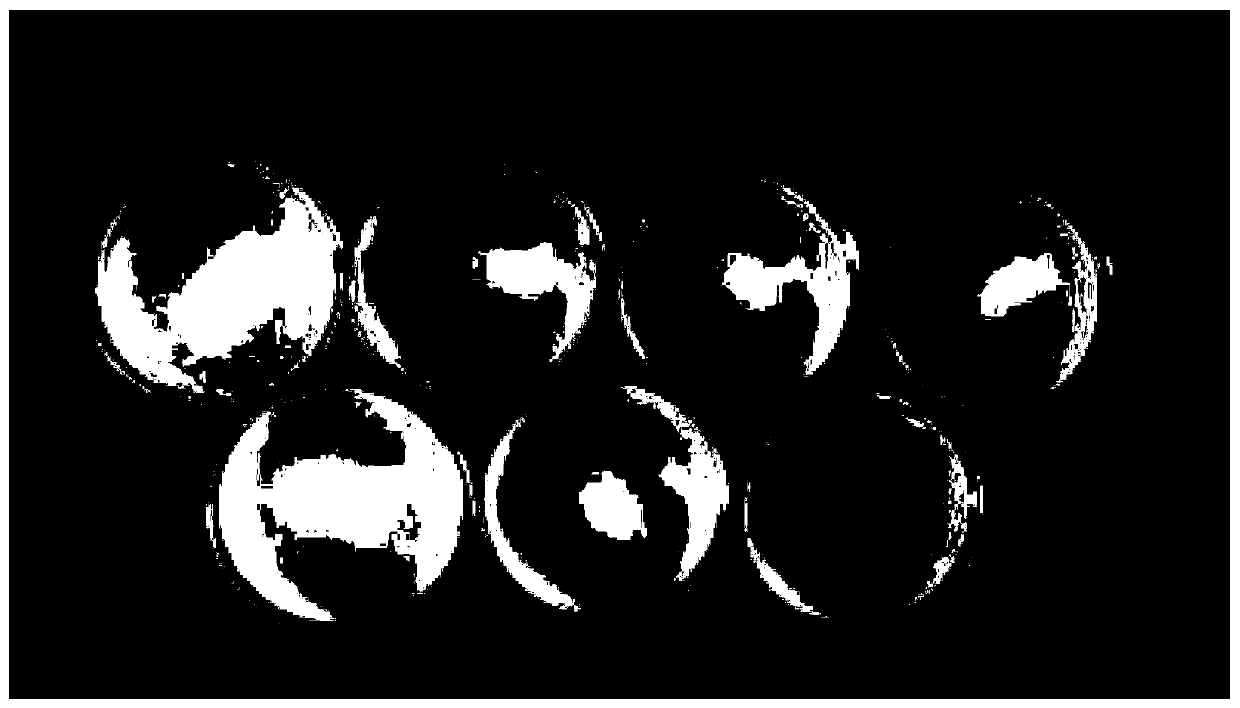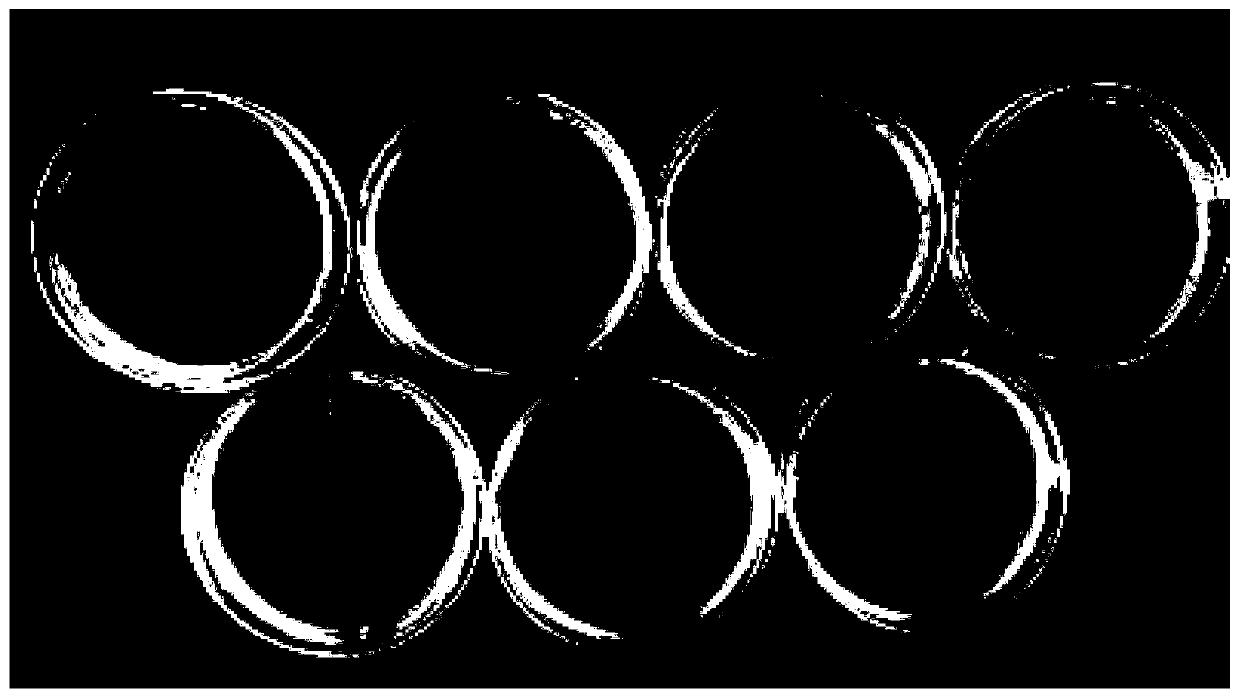Natural mineral pigment color difference test method taking polydimethylsiloxane as substrate
A polydimethylsiloxane and natural mineral technology, applied in the field of pigments, can solve the problems of affecting the color performance of pigments, affecting color difference, and uneven dispersion of pigments, so as to improve detection accuracy, avoid detection errors, and achieve rapid efficiency. Effect
- Summary
- Abstract
- Description
- Claims
- Application Information
AI Technical Summary
Problems solved by technology
Method used
Image
Examples
Embodiment 1
[0035] 1) To ensure that the mineral pigment is dry and free of impurities, use a mechanical pulverizer to crush large particles of lapis lazuli (natural mineral pigment) into powder, and the crushing time is 0.5min;
[0036] 2) using a standard vibrating sieve machine to process the lapis lazuli powder obtained in step 1) for 20 minutes, and using standard sieves with mesh numbers of 70 and 160 to screen out mineral pigment powders with a particle size of 100-200 nm;
[0037] 3) Evenly mix the polydimethylsiloxane main agent (agent A) with the polydimethylsiloxane curing agent (B agent), the mass ratio is B:A=1:19.5, the mixed solution of each test The dosage is 5.9g, and it is best to use a biological surface dish with a diameter of 6cm for the mixing vessel;
[0038] 4) Weigh 0.3 g of the lapis lazuli powder obtained in step 2) and put it into the polydimethylsiloxane mixture obtained in step 3) and mix and stir until the uneven color blocks in the mixture completely disapp...
Embodiment 2
[0044] 1) To ensure that the mineral pigment is dry and free of impurities, use a mechanical powder machine to crush large granules of turquoise (natural mineral pigment) into powder, and the crushing time is 1 minute;
[0045] 2) using a standard vibrating sieve machine to process the turquoise powder obtained in step 1) for 21 minutes, and using standard sieves with mesh numbers of 70 and 160 to screen out mineral pigment powders with a particle size of 100-200nm;
[0046] 3) Evenly mix the polydimethylsiloxane main agent (agent A) with the polydimethylsiloxane curing agent (B agent), the mass ratio is B:A=1:20.5, the mixed solution of each test The dosage is 6.1g, and it is best to use a biological surface dish with a diameter of 6cm for the mixing vessel;
[0047]4) Weigh 0.5 g of the turquoise powder obtained in step 2) into the polydimethylsiloxane mixture obtained in step 3) and mix and stir until the uneven color blocks in the mixture completely disappear;
[0048] 5)...
Embodiment 3
[0053] 1) To ensure that the mineral pigment is dry and free of impurities, use a mechanical powder machine to crush large particles of malachite (natural mineral pigment) into powder, and the crushing time is 0.7min;
[0054] 2) Process the malachite powder obtained in step 1) for 20.5 minutes using a standard vibrating sieve machine, and use standard sieves with mesh numbers of 70 and 160 to screen mineral pigment powders with a particle size of 100-200 nm;
[0055] 3) Evenly mix the polydimethylsiloxane main agent (agent A) with the polydimethylsiloxane curing agent (B agent), the mass ratio is B:A=1:20, the mixed solution of each test The dosage is 6g, and the mixing vessel is best to use a biological surface dish with a diameter of 6cm;
[0056] 4) Weigh 0.4 g of the malachite powder obtained in step 2) and put it into the polydimethylsiloxane mixture obtained in step 3) and mix and stir until the uneven color blocks in the mixture completely disappear;
[0057] 5) Use a...
PUM
 Login to View More
Login to View More Abstract
Description
Claims
Application Information
 Login to View More
Login to View More - R&D
- Intellectual Property
- Life Sciences
- Materials
- Tech Scout
- Unparalleled Data Quality
- Higher Quality Content
- 60% Fewer Hallucinations
Browse by: Latest US Patents, China's latest patents, Technical Efficacy Thesaurus, Application Domain, Technology Topic, Popular Technical Reports.
© 2025 PatSnap. All rights reserved.Legal|Privacy policy|Modern Slavery Act Transparency Statement|Sitemap|About US| Contact US: help@patsnap.com



